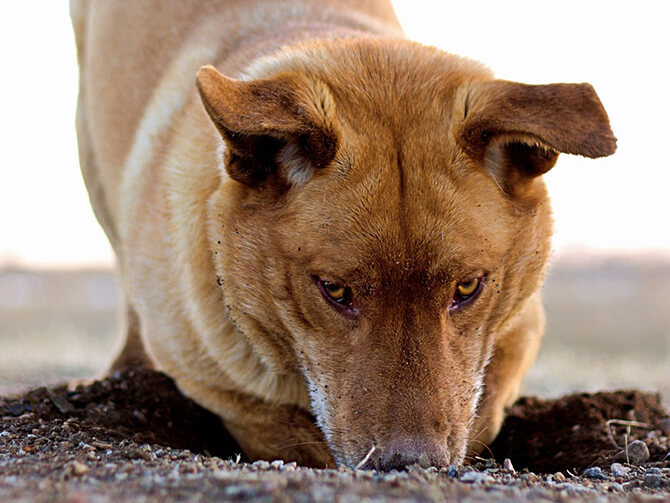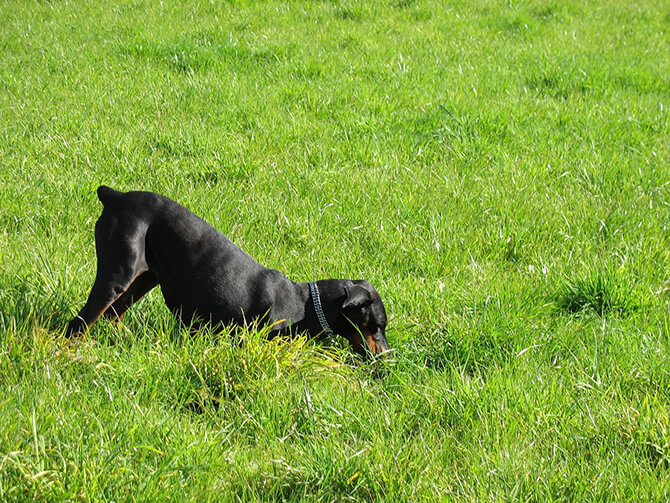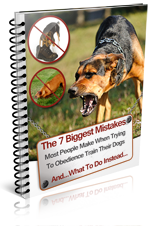
Learn to be the dominant figure and take control of your Dog's Digging behavior today.
Once a dog has begun to dig, there are several options that you have to either eliminate the behavior or modify it to an acceptable practice. The first decision is to decide if you wish to eliminate or modify the digging. Remember that some breeds dig by instinct and breeding, so eliminating this type of digging will be very difficult. The best option with a digging breed such as a terrier or Border Collie/Australian Shepherd is to modify the digging to a designated area.
Designated area digging
This is a relatively easy process, and requires a bit of effort and pre-planning by the owner. The first step is to note where the dog digs most often, and try to use this area to start the process. After you have designated the area:
- Clearly define the area by fencing or temporarily fencing the area so the dog can understand where and where not to dig.
- Soften the soil in this area to make it attractive for digging. A shallow tilling will loosen the soil.
- To get the dog used to digging in the area try hiding its toys or little treats just under the surface. When the dog digs there to retrieve them, praise the dog.
- If the dog digs outside of the area give a short command such as "No". Then call the dog to the correct area and encourage digging by putting a treat under the soil and then praising the digging.
Exercise and entertainment
If the dog digs out of boredom try:
- Providing additional exercise before leaving the dog alone. A game of fetch is great as it gets the dog involved in chasing a ball. The ball can then be left for the dog to play with when you are gone.
- Provide a meaty knucklebone or other chew item for the dog to keep busy with while you are away. If the dog digs to bury items this will become evident and the solution will need to change. Be sure to remove the bone or chew toy when it becomes too small to avoid choking hazards.
- Provide toys for your dog to chew on and play with while you are gone. I highly encourage the Kong toy or Buster cube, both of which can entertain your dog or hours (and keep his appetite satisfied).
- Try to minimize the time that you are away from the dog initially and reward it when there is no digging in the yard. Provide a companion pet if possible, or have a neighbor come over to play or walk the dog during the day.
Make digging undesirable
If your dog digs in the same area continually you can try one of the following:
- Place a small amount of the dog's fecal material just under the surface of the soil. Dogs will usually refuse to go back to this area and will not continue to dig.
- Salt the earth with pebbles or ground red pepper. Dogs do not enjoy digging on rough patches of land, and the smell and taste of red pepper should be more than enough to ward your dog away from that area.
- Fill the hole with water before leaving the dog alone in the yard. Again, most dogs will not dig in mud and will learn to stop. They may, however, just move to another area.
- Place a small amount of chicken wire or mesh just under the surface of the soil. The dog will not want to dig, as it will be painful to dig through. The mesh must be very fine to avoid any possible damage to the dog's feet or claws.
- Kennel the dog in a run that is gravel or cement. Dogs generally will not dig through gravel, and of course cement prevents this totally. This should be the last option, and remember that the dogs will need addition exercise if this is the decision. They will also need appropriate shelter and bedding.


